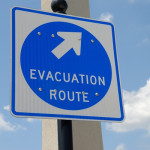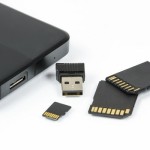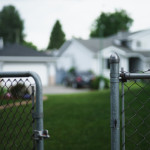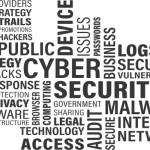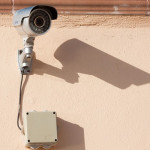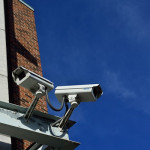September Is National Preparedness Month
Recently, Hurricane Harvey and Hurricane Irma have devastated and affected many, leaving a trail of destruction in large areas. Whether it is hurricanes, thunderstorms or tornadoes, natural disasters provide a stark reminder of our vulnerability and that we should always be prepared.
September is National Preparedness Month and this year’s theme is “Disasters Don’t Plan Ahead. You Can.” Each week throughout the month focuses on a different theme, all helping to emphasize preparedness among everyone including youth, older adults, and people with disabilities and others with access and functional needs.
The best way to combat the unpredictability of natural disasters and emergencies is to plan ahead. Here are some helpful tips to help get you started.
Be Informed.
Visit www.ready.gov for more information on what to expect, how to make a disaster kit and how to prepare and plan ahead for disasters.
Many emergencies can happen anywhere, such as power outages or disease outbreaks. But certain disasters are more likely in some places than others. For example, in California, earthquakes are more common than tornados or tropical storms. Understand which types of natural disasters are common for your area and begin preparing for those accordingly.
It is recommended that you understand the local mass warning systems that officials will use to inform the public of extreme weather conditions. Commonly used are the National Weather Service and the U.S. Geological Survey. Know how to receive information from these agencies and prepare a backup way of receiving this information in case your primary system goes down.
You should also know where evacuation points are located in the event you cannot get home or your current location becomes unsafe. Know what circumstances would require evacuation and when to shelter in place.
Make A Plan.
Keep it practical and tailored to disasters you are most likely to encounter. Take what we have previously mentioned and discus it with your family. Go over different disaster scenarios and what the family plan is for each one. Things like whether it occurs on a weekday or weekend and if children are at school should all be considered while planning.
Making a disaster kit is the next step. You should include supplies necessary for a three-day period (the estimated time it might take to clear roads, restore power and have emergency crews reach people).
After a disaster, emergency responders will address critical needs first and might not be able to get to everyone right away. A disaster kit will allow you to take care of yourself, your family, and possibly others, freeing up emergency responders to focus on the critically injured and restoring infrastructure.
Creating multiple kits and storing them in different locations (car, office, home) is suggested – you never know where you will be when disaster strikes.
Get Involved.
You can participate in America’s PrepareAthon! – a nationwide campaign to increase community preparedness and resilience.
Share your own preparedness tips with us on Facebook, Google+, Twitter, LinkedIn, and Pinterest. Visit SecurityCamExpert.com to browse our stock of CCTV security cameras and systems to keep an eye on your properties.
Safety, Security, & Storage
Personal and public safety is always a top priority. Recent events have shown us that, whether planned or spontaneous, violent attacks can be extremely tragic and devastating. These also remind us that improving our security and surveillance systems is vital and show us what needs to be addressed and how we can safeguard against future threats.
Border & Airport Security
While border security is a controversial subject, in terms of security, the border or perimeter is essentially a vulnerable point of entry. Because of this, governments are looking to improve surveillance and secure boundaries. One way they are stepping up security is by employing remote video surveillance and analytics.
For example, the Department of Homeland Security have strategically placed towers to provide remote video surveillance along the southwestern and northern borders of the United States. The U.S. Customs and Border Patrol agency believe more towers would help to expand surveillance and provide more protection in remote areas.
Airports act in a similar fashion, as they represent a type of boundary and serve as a key point of entry for international travelers. With that said, airports must be monitored and secured carefully to protect not only passengers and visitors, but also aircraft, terminals, parking facilities, fuel facilities, airline buildings and power supply facilities. In addition, airports are often a prime target for terrorists since large, diverse crowds congregate, making security both critical and a major challenge.
Thus, video surveillance is crucial to airport security systems. Security cameras are placed throughout the various facilities to monitor crowd activity, perimeter gates and fencing, and other high traffic areas (ex. security checkpoints, baggage handling, hallways, seating areas, entrances/exits). Live streams are monitored continuously with the aid of video analytics and facial recognition is used for staff as well as guests. This technology quickly identifies who has authorized access to certain areas and can spot known suspects and criminals. Furthermore, virtual tripwires help to secure certain boundaries, and behavioral analytics algorithms help to detect any unusual behaviors, including left-behind packages.
To maintain optimal security and protection at borders and airports, security systems must monitor suspicious activity over time, track movements of watch-list suspects and share said information among agencies. It is a complicated process which depends on the sufficient work of real-time and archival video surveillance footage. And while advances in security camera technology (ex. higher-resolution capability, panoramic viewing, onboard analytics and integrated audio) are incredible, they also increase the need for sufficient storage capacity.
Before you make the decision on video surveillance storage, here are some factors to consider:
Retention Time
This can have a dramatic impact on the amount of storage necessary. Due to regulations and litigation issues, retention time is increasing, thus more storage capacity is necessary.
For example, HB 976 was passed in Georgia in 2016, requiring law enforcement to retain video from body-worn cameras and vehicle-mounted devices for a minimum of 180 days. In addition, any video recording related to a criminal investigation or pending litigation must be retained for 30 months.
Aside from complying with regulations, the value of video may increase in regards to analyzing people and patterns are observed over longer periods of time. It is important to consider long-term storage needs when making retention policy decisions.
Access
When it comes to storage, options include enterprise digital video recorders, boxed appliance network video recorders, PC-based network video recorders, enterprise storage platforms, tape, and cloud storage. Some make it easier than others to retrieve and share archived footage.
Before deciding on a storage solution, take into account the individuals who may need to access to the footage, how quickly they will need it and whether or not video files will be shared with other agencies.
Cost
Storage accounts for a good chunk of video surveillance budget since many opt for high-performance disks over tape (a more cost-effective solution). In order to minimize costs while still maintaining quality performance, you may want to size disk storage to meet ingest performance requirements, and then build long-term retention capacity using tape or cloud.
Video surveillance is a vital tool for law enforcement and other government officials, and the expanded use of more powerful cameras along with new video analytics greatly improves security. However, as mentioned, new capabilities have a significant impact on video storage as well.
Not all storage solutions are the same, thus, taking the time to understand how each solution works and finding a balance between retention time, accessibility, and cost is crucial to making the best decision.
If you need security camera systems and storage for your home or business, visit SecurityCamExpert.com to browse our stock. To schedule a site survey or request a free quote, please call 888-203-6294. You can also connect with us on Facebook, Google+, Twitter, LinkedIn, Pinterest, and Yelp!
Perimeter Security
Whether you are securing your home or business, perimeter security is often your first line of defense. Aside from the exterior of the structure, perimeter security creates boundaries to keep intruders out. If you are considering perimeter security, there are numerous options available to you – here’s what you need to know.
Locks
Locks are very important to perimeter security. If you have nothing protecting your property beyond the walls of your home or building, you will need to invest in strong, sturdy locks. The most common breach would be forced entry, which simply destroys the lock to gain access. To safeguard against this, you want to choose locks that make use of hardened metal alloys that are as thick as possible.
Cutting attacks are common if you are using padlocks on your gates. Aside from the shackles of the locks, the hasp or chain being secured by the padlock may also be targeted for cutting. If these are weaker than the lock, the strength of the lock will not matter.
When it comes to covert entry, bump keys are more of a concern than lock picking, as the latter wastes time and effort. The internal complexity for locks will help increase perimeter security and prevent unauthorized key duplication.
Walls
Unlike a fence, walls provide more privacy as they better obstruct visibility. Higher walls mean lower visibility and a greater obstacle to gain entry. The downside is that the decreased visibility affects both sides, meaning that while outsiders may not be able to see in, you may not be able to see anyone approaching the property.
Luckily, the visibility concerns for high walls can be resolved with the use of security cameras or other forms of documentation (such as security guards). Documentation is a key consideration (which will be discussed further), but it is not always feasible for some.
In the end, it all comes down to the intention of your perimeter security. With a wall, you get more privacy and a sturdy barrier which allows you to put more focus on securing the gate.
Fencing
Fences offer extreme flexibility in that the price, look, and functionality have the most range. You can adjust the visibility by choosing different designs and even growing ivy or other plants around it. In extreme cases, most common fences may be easier to electrify, depending on the material of the fence.
Unless you have concerns about automotive ramming threats, the fact that a fence is weaker than a wall may be a minor detail. However, fences may be compromised at certain points, whether from vandalism or wear, thus creating entryways which defeat the purpose of perimeter security measures. Even if the openings are not wide enough for humans, you run the risk of animal infestation or pet escape.
Wood fences and chain link fences are often the most common types, and usually signify a boundary that others should not cross, or simply denote a property line. Fences alone are rarely high security, but with electrification or barbed wire, they can be somewhat intimidating.
Gates
A gate is the moving section on a gate or wall that allows entry and exit through perimeter security. Because this is usually the only point of entry and exit around the perimeter of a building, the gate will need a locking mechanism.
If you are planning on taking vehicles past the perimeter security, you may want to use a motorized track and electronic lock. For gates with less traffic or only foot traffic, choose a high-security padlock. There may also be a gate setup that allows you to use a deadbolt and or/keyed handle/knob.
For effective perimeter security, a keyed handle/knob may not be the best choice. A deadbolt provides more security, however, the strength of the deadbolt must be considered. But keep in mind, if the lock is too strong, the material of the gate may be attacked, or intruders may simply climb over.
Lighting
Perimeter security systems should always consider lighting, and one of the first things to assess is shadows. Trees, pillars and other tall obstructions will create dark shadows for criminals to lurk. With proper light, you afford yourself the ability to see criminals approaching or attempting to bypass your perimeter security.
Motion sensor lights are effective in that they focus attention and are often the choice for many residential buildings without security guards. For residents, a light turning on suddenly will often alert them of unexpected movement around the house. For those properties with high walls, or an obstructing fence, the abrupt light hopefully catches the attention of neighbors or pedestrians.
Despite drawing attention, your security depends on whether or not bystanders or neighbors intervene. Everyone has an interest in preventing crime, but if someone is unaware of the threats or the victim, people may do nothing to avoid confrontation. It may behoove you and your property to get to know your neighbors and keep a lookout for each other.
Alerts & Notification
Some people may struggle with the decision of investing in a dog or an alarm system. While getting both is definitely an option, the decision will likely come down to your ability to take care of an animal. When it comes to alarms, you will want one that offers monitored security so that authorities can be notified in case of emergency.
However, these notifications are only effective if response times are within the average time it takes to commit a break-in. If not, alerts and notifications are rather useless. A loud alarm may help to alert anyone who is around to the crime that is taking place.
If you’re looking for more discreet notifications, a smart lock with access notifications might be the solution. This allows you to know when a lock has been opened, and can be extremely helpful if you suspect any internal threats.
Documentation
Most perimeter security systems rely on security cameras. They are largely accessible and are great for capturing evidence of threats and criminal acts.
Before installing security cameras, you should know what is allowed and what is not. You must abide by the law when it comes to documentation efforts otherwise your footage will be useless and may even get you in hot water.
When choosing cameras, you should keep your security intentions in mind. If you need footage that will hold up in court, you will need the right kind of camera to record quality video in that environment. You will need to consider glare from the daylight and possibly night vision. Also, you need to consider placement as you may need multiple cameras to adequately cover your perimeter. If you have more questions regarding security cameras systems and installation, feel free to call us at 888-203-6294.
Natural Barriers
A positive natural barrier is something that offers another level of security to your property. This can be anything from the proximity to a police station to a single, long road leading to your home.
Consequently, there are also natural barriers that prevent you from taking full advantage of your possible perimeter security system. For example, a treeline on the side of your property may offer a natural border, however, it may also help intruders cover their approach. Also, motion sensor cameras and lights placed in heavy foot traffic areas may produce lots of false alarms, becoming more of a nuisance than an effective security measure.
Your best bet is to identify what works for you and what does not in terms of security. You shouldn’t invest in a method of perimeter security just to use it. Focus on the positive barriers and try to compensate for any negative barriers you cannot change.
Aesthetics
The consideration for aesthetics is to find a balance between it and your perimeter security. Rather than choosing to make the property look good and then incorporate security, you should be trying to make the security you need look good.
If you are adding to your landscape or home, you should always consider how it will affect your perimeter security. It is best to opt for something with a neutral or positive effect, not something that will be a detriment.
Access Control
Who has access to your property is a very important part of making your perimeter security work to your benefit. Key control is a good starting point (numeric codes, RFID remotes, physical keys, etc.). With codes and biometric locks, your access control management software may make it quite simple to know who is entering the property and when. If any issues arise, it is easy to simply revoke privileges.
Those who have access should be trusted individuals. You should be sure that they will not take advantage of your property and will take the necessary precautions to protect their key from being stolen or misused.
Key control for physical keys can be taken care of by investing in locks with patented keyways. This will improve your protection against most forms of covert entry, but mostly it will prevent unauthorized key duplication.
Which perimeter security methods do you find most effective? Share with us on Facebook, Google+, Twitter, LinkedIn, and Pinterest.
Visit SecurityCamExpert.com to browse our selection of quality CCTV surveillance systems and learn more about our Installation and support services.
CyberLabLA
It seems Los Angeles is continuing its efforts to shed light on cybersecurity in hopes to decrease risks all around. Initially, the city used federal grant funds to install tools to centralize cybersecurity issue monitoring. Now, officials have unveiled a cybersecurity initiative geared toward businesses and residents.
The Los Angeles Cyber Lab (CyberLabLA) is a new public-private-partnership led by a Board of Advisors including Mayor Eric Garcetti along with top Los Angeles businesses and government officials. CyberLabLA’s mission is to protect personal and protected information from malicious cyber threats by sharing the latest cybersecurity threat data, alerts and intelligence gathered by those involved. Free membership will be open to all businesses and Los Angeles residents.
While there have been threat-sharing partnerships in the past, none have emerged to address an entire region or small- and medium-sized businesses like this program plans to do. And despite the fact that companies in the same industry are more likely to face similar threats than those in unrelated industries, all businesses are expected to find value. Mayor Garcetti hopes that through shared knowledge of threats, regardless of industry, businesses in Los Angeles will be better protected.
Still in its infancy, CyberLabLA will roll out in three phases. Phase 1 will begin with Protection and Alerts in which Los Angeles will share information generated from its Integrated Security Operations Center (ISOC) with all members. These updates include cybersecurity data, alerts, indicators of compromise and threat intelligence. Phase 2 will invite members to share data with the organization, sans confidential or proprietary information for added security. Phase 3 will develop the Cyber Lab Innovation Incubator (Incubator). Security vendors will be able to test appliances and tools via virtual connections to a live, but isolated, city of Los Angeles network (“Honeypot”). The Incubator will be populated with student interns, affording them real world experience in a security environment. Eventually, the Incubator will generate additional intelligence and information to share with members.
Initial advisors include Anschutz Entertainment Group (Staples Center), Cisco, Motorola, Cedars-Sinai, City National Bank, Dollar Shave Club and SoCal Edison. The city’s move to push cybersecurity as a public service will not only benefit businesses, but its effects will trickle down and help to protect customers and residents as well.
What are your thoughts on CyberLabLA? Would you consider joining? Share with us on Facebook, Google+, Twitter, LinkedIn, and Pinterest.
For your physical security, browse our selection of CCTV surveillance systems at SecurityCamExpert.com. To request a site survey, free quote, or to schedule an installation, please call 888-203-6294.
Back-To-School Transportation Safety Tips
It’s that time of year again – summer is winding down and children are heading back to school. Thus, we must also deal with an increase in foot and street traffic. This can cause increased stress in some, which may result in dangerous situations and bouts of road rage. It is important to remember to proceed with caution. Take heed of these back-to-school road safety tips.
- Slow Down
When kids are present (especially in school zones and neighborhoods) before and after school, it is important to abide by speed limits and slow down.
- Keep Your Distance
Always keep a safe distance between you and the bus (or any vehicle) you are following. This will allow you enough time and space to react to any of the bus’s intentions.
And remember, it is illegal to pass a school bus that is stopped to load or unload children. The area 10 feet around a school bus is the most dangerous for children – be sure to stop far back enough to allow kids to safely enter and exit the bus.
- Heightened Alert & Awareness
In school zones, near parks or playgrounds, and in neighborhoods, be more alert when watching for children. And always obey a crossing guard’s stop sign at intersections and crosswalks.
- Do NOT Block The Crosswalk
When stopped at a red light or waiting to make a turn, avoid blocking the crosswalk. By blocking the crosswalk, pedestrians may be forced to walk around you, possibly putting them in the path of moving traffic. Always stop before the crosswalk line and watch for pedestrians.
- Follow Pick-Up & Drop-Off Instructions
If there are dedicated pick- up and drop-off zones and rules, follow them. They are put in place for the safety of your children. Double-parking not only holds up traffic, but also reduces visibility for all, increasing the risk for an accident or dangerous situation.
- Walking Routes
If you are letting your children walk to school, be sure to scope out the route beforehand. You want to make sure that the route offers good visibility, is relatively free from hazards, has plenty of pedestrian room at a safe distance from traffic, and involves no dangerous crossings. There should be well-trained crossing guards at every intersection your children must cross. Consider the available daylight when your child will be walking and always dress them in brightly colored clothing, regardless of visibility.
- Bike Safety
If your children will be riding a bike to school, they must always wear a Consumer Product Safety Commission-approved helmet. Kids must also bike during daylight hours only, wear bright attire, and follow the rules of the road. Children under nine must ride with an adult and out of the road as well. It is up to the parents’ discretion whether or not older children may ride bikes in traffic.
Share your own back-to-school tips with us on Facebook, Google+, Twitter, LinkedIn, and Pinterest.
Shop our stock of quality CCTV security cameras and surveillance equipment online at SecurityCamExpert.com. To learn more about our products and services, or to request a quote or site survey, please call 888-203-6294.
The Progression of Video Surveillance Technologies
Over the years, video surveillance has made great improvements in regards to design, features, functionality and application. As our technologies continue to evolve, the surveillance industry is bound to grow and expand even further.
In 1996, Axis Communications introduced the first IP Camera. This was originally used for monitoring the sea for oil spills, saving their customers from having to take two flights a day. Decades later, digital cameras are now the norm, from entertainment to security purposes.
When it comes to security, because we are very visual and use our eyes more than any other senses, we tend to prefer video. This is why we see CCTV surveillance cameras nearly everywhere these days. But how can we improve it?
Video surveillance can be valuable to businesses, however, monitoring the live feed 24/7 is not very realistic. Other detection tools, such as perimeter breach or motion detection, in conjunction with an alarm or alert system helps to improve security. But, as with most things, it has its flaws. These can include problems with detecting the breach, a bad judgment call in regards to what is seen, how long the feed is monitored and the length of backtracking.
Video analytics is more prevalent these days and makes efforts to address this issue. Thanks to advancing software and artificial intelligence (AI), video analytics can determine a human from an animal, eliminating false alarms caused by a pet at home. It also eliminates human error and takes motion detection a step further, as some systems can also distinguish between a known house member and a stranger.
Business and home protection continues to advance as more security camera systems integrate video analytics along with alarms, PIR sensors, and smart recordings. And thanks to edge computing, these technologies are becoming more accessible. By performing data processing at the edge of the network, close to the source of data, edge computing ultimately optimizes system performance.
But aside from all these advancements and improvements, privacy is still an important issue. Many feel uncomfortable having cameras watching over them and having their video streamed into the cloud. But what if our security systems became so advanced that video surveillance became unnecessary?
Hypothetically, an “Optical Analytic Sensor” could use edge computing to process new, updated analytics without having to transmit video. Instead, detailed descriptions of events would serve as data, eliminating bandwidth requirements and video privacy issues. Using advanced tools and AI, this sensor device could learn how to distinguish between known users and strangers. Thus, the device could automatically grant access t authorized users, eliminated passwords, codes, pins or keys. In a commercial setting, this device could sound an alarm for any unauthorized persons while ignoring those who are allowed to be there.
Again, this is all hypothetical and we may be years away from such an advanced and sophisticated system, but this shows how video analytics have the potential of enhancing various security applications.
What do you think the future holds for video analytics and surveillance technology? Share your predictions and thoughts with us on Facebook, Google+, Twitter, LinkedIn and Pinterest.
Visit SecurityCamExpert.com to shop our stock of security cameras, DVRs, NVRs, and more. If you have any questions, please call us at 1-888-293-6294 and our team will be happy to assist you.
Smart Home Technology
Smart home technology seems to be popping up everywhere these days, from locks to lights to thermostats. Such an abundance of tech and devices makes it hard to determine which ones are really worth the hype.
When you are shopping for smart home technology and devices, it is best to focus on how these will help you. Those that save you time and money in the long run are usually better choices. Here are a few examples of good smart home investments.
Smart Switches
Smart switches allow you to control lights and appliances remotely from an app. Save energy and ensure your devices and appliances are not left on standby. Most smart switches are easy to install as they simply plug into an existing power outlet, making them a sound purchase.
Air Purifiers
Air pollution is not limited to the outdoors. The air within your home could be polluted too. To improve the air quality in your home, a smart air purifier could be just the trick. Most air purifiers capture gases and fine particles such as allergens and pollutants. What makes them smart is their ability to be controlled remotely, enabling you to monitor air quality, make adjustments, and even schedule purifications with your smartphone or device from afar.
Smart Smoke Detectors
Aside from detecting smoke and carbon monoxide faster than standard models, smart smoke detectors deliver voice alerts to tell you when and why the alarm is sounding.
Baby Changing Tables
No, this does not mean the end of your diaper-changing days. It does mean that you get an easier way to monitor your baby’s health. Smart changing pads allow you to track your baby’s weight, food intake, and any changes, making it a great product for parents.
Smart Fridges
While these have been around for a while, they are getting even smarter. For example, the LG Smart InstaView has partnered with Amazon to enable you to order items directly from the store by scanning items on the panel of the fridge. And thanks to a cleverly placed security camera, you may view the contents of your fridge from your phone! No more getting up to linger in front of your open refrigerator, wasting energy and time.
Which smart home appliances would you consider a smart investment? Share with us on Facebook, Google+, Twitter, LinkedIn, and Pinterest.
If you’re in the market for home security solutions, visit SecurityCamExpert.com for a wide selection of CCTV surveillance camera packages and more. To learn more about our site surveys and installation services, or for a free quote, please call us at 888-203-6294.
The Importance Of Business Security Systems
Unfortunately, for many businesses, physical security is often overlooked. Some may have budget concerns while others may simply be too busy running their business. Sometimes it takes an actual incident for businesses to consider installing a security system.
Whatever the excuse, security should never be dismissed; it should be considered from the very beginning. As much as we would like to believe our chances of being targeted are slim, the truth is it happens more than we would like to admit. And thanks to advanced technology and increased demand, there are a variety of security solutions to suit different budgets and needs.
Here are some of the ways your business can benefit from a solid security system.
Deter Criminal Activity
This is obviously one of the most important reasons businesses look into security solutions. The presence of security cameras tends to discourage criminals for fear of being caught. In turn, they much prefer businesses which do not have proper surveillance systems in place.
In addition, security systems enable businesses to act quickly in notifying authorities when incidents do occur, helping to de-escalate the situation faster.
Protect Your Business Assets
Regardless of your company’s insurance policy, the loss of certain assets can still be devastating. For example, if your customers’ data is stolen, the repercussions could be extremely damaging and irreversible. Security systems come into play to secure assets which cannot be accounted for via insurance payouts.
Enhance Employee Safety
Employee safety is important, and security systems can help to protect and reassure your workers. For those who work late shifts, odd hours, or are often alone on the premises, security cameras can offer peace of mind. Should an accident or dangerous incident occur during this time, an advanced security system would be able to send out an alert and provide evidence as needed.
You will want to extend your security camera system to the employee parking lot as well, monitoring employees and they arrive and leave work, walking to and from their cars. Employees will also feel safer knowing their vehicles are under a watchful eye.
Save Money
While you may think the costs are too high, security solutions can save you money in the long run. First, many insurance companies offer discounted premiums to companies that utilize security systems to deter criminal activity. Some insurance companies even go as far as helping small businesses by defraying the costs. Also, surveillance footage helps to speed up the claims process.
The surveillance footage may even be used to defend your company in the case of frivolous lawsuits. For example, if a customer spends time on your property then falsely claims they were injured, without security cameras, it is their word against yours. Video surveillance could prove who is liable and potentially save you from expensive lawsuits.
Enjoy Greater Peace Of Mind
Aside from the benefits outlined above, there is an intangible feeling of peace knowing that your business is secure. Most advanced systems now offer remote access around the clock, allowing you to check in from wherever you may be.
The next, very important step is to choose the right security system for you. There are numerous security solutions that offer different features and functions, so you should take the time to evaluate your needs and research different systems. Feel free to browse our stock at SecurityCamExpert.com. We offer free quotes, site surveys, and provide installation and support services. If you need any help or have any questions, call us at 888-203-6294 and we will gladly assist you. You can also connect with us on Facebook, Google+, Twitter, LinkedIn, Pinterest, and Yelp!
Fingerprint Sensor Myths
As the Internet of Things continues to grow, more and more of our personal and business matters are being handled online. Thus, the internet is becoming a hotbed for cyber attacks, demonstrated by the various hacking stories in the news lately. Smartphones and PCs are often targeted since they usually contain a wealth of personal data. Thus fingerprint sensors are being implemented on these devices in order to properly identify and grant access to the legitimate owner.
But with new technology comes new concerns and critiques. Some people believe that fingerprint sensors are not as secure as they are being touted, while others believe the concept is simply not feasible. Here are some of the most common myths about this biometric technology.
Myth: It’s easy to spoof a fingerprint.
Despite its portrayal on the big screen, taking a high-resolution photo of a fingerprint or recovering a latent print would be extremely difficult. This method is known as an “attack spoof” and, because of its challenging nature, would not be a method that a criminal would likely use. With the exception of an extremely high-value target, it simply would not be worth the effort.
The main reason this myth persist is because this process can be easily demonstrated with a willing participant. You can create a spoof of your own fingerprint by creating a mold with various substances, including glue or clay. Fortunately, new anti-spoofing algorithms are constantly working to combat this.
Myth: Optical sensors are less secure than capacitive sensors because they store the actual fingerprint image.
Optical sensors do NOT store the complete fingerprint image. Instead, the biometric information is converted into a “template”. This template retains certain parameters while discarding the rest, and is then encrypted when the abstract data is stored. Since it is not a complete image, even if the fingerprint template is somehow retrieved, recreating a fingerprint from the template data is not possible. This applies to both optical and capacitive sensors.
Myth: If a bad guy gets the fingerprint image off of your phone or PC, he can use it to access your phone.
As previously mentioned, fingerprint images are not stored on your smartphone or PC, therefore, they cannot be stolen from your device.
Myth: Multi-factor biometric security on mobile devices is hard and/or expensive to do.
There is some truth to this. Mobile devices already have fingerprint sensors and front-facing cameras, so we can expect to see an increase in multi-factor authentication based on your fingerprint and face. Other combinations (e.g. iris and voice recognition) will likely follow.
Now comes the hard part. The algorithms that combine multiple biometric factors into a single trust score need to be thoroughly verified. While this is a complex process, expect to see it become available in the near future. When that happens, we will see a strong network in place that supports multi-factor authentication across various platforms and applications.
Myth: Contextual factors aren’t enough to secure a mobile device.
This statement should read that contextual factors “alone” are not enough to secure a mobile device. When combined with biometric authentication, contextual factors can be part of a smart and strong security solution. For example, smartwatches can stay unlocked until you take them off, offering convenience and security. Contextual factors, such as location, proximity, room monitoring, etc., will allow your device to remain unlocked as long as you are in your office, or to authorize transactions without additional authentication.
Myth: Fingerprint sensors have to be on the home button or back of the smartphone.
Fingerprint sensors are available in a broad range of form factors, including slim sensors that fit within the power button. New sensors also work under the cover glass and detect fingerprints so that the physical home button can be eliminated, thus enabling edge-to-edge infinity displays. We may eventually see solutions in which the entire display contains sensors, allowing an effective fingerprint scan from anywhere on the screen.
Myth: Biometric authentication is just for security.
This technology is not only used for security, but can also enhance the user experience. For example, if you are driving a car that uses a fingerprint scan on the start button, it may adjust preferences (e.g. seat, mirrors, infotainment) to match the user. In the case of a smart home, a fingerprint scan may unlock a door, trigger preferred lighting and music settings, and possibly restrict access to certain home features (for time-shares or rentals).
Myth: Optical sensors are too big/power-hungry for fingerprint scanning in a mobile device.
Thanks to technological advances, optical sensors are small and efficient enough to be used in mobile devices. Some optical sensors can generate more in-depth fingerprint images which allow for more details to be used in the fingerprint template.
Myth: All fingerprint solutions are equal, so cost should be the deciding factor.
Fingerprint-sensor providers offer a range of solutions utilizing different technologies (e.g. capacitive vs. optical) with varying security levels, form-factor options, power consumption, durability, and software. It is best to look at the specifications of both the hardware and software involved before making your decision, rather than basing your decision solely on cost.
Myth: Biometrics are too difficult/too expensive to manage for use in enterprise environments.
When it comes to enterprise environments, fingerprint solutions are actually more secure than username/password configurations. With fingerprint solutions, the need for password resets or IT support calls are eliminated. Because of this, maintenance and support for these systems is easier, which is crucial in today’s cloud-based business world. And updating PCs is simple via a peripheral USB dongle-based fingerprint sensor, or a mouse with embedded fingerprint sensor.
Myth: Encryption is enough to protect a fingerprint template file.
Encryption is used to protect the template file while it is being stored, generally in a small amount of non-volatile RAM (NVRAM). However, more protection is necessary for when the template must be decrypted, for example, during the testing for a match. These security architectures can include match-on-host solutions, secure element, and match-in-sensor solutions.
What are your thoughts on the future of fingerprint sensors and biometric technology? Connect with us on Facebook, Google+, Twitter, LinkedIn, and Pinterest.
Invest in your security and safety when you shop at SecurityCamExpert.com. Find CCTV surveillance cameras, DVRs, NVRs, and more to monitor and secure your home or business. Call 888-203-6294 to learn more!
Sun Safety
Now that summer is in full effect, you should be mindful of sun safety practices. Whether you’re enjoying a staycation, vacation, or simply some outdoor fun, be sure to protect your skin from the sun. Here are some helpful sun and skin safety tips to keep in mind.
Cover Up During Transit
The ultraviolet (UV) A rays from the sun may not always cause sunburn, however, exposure can lead to skin aging and skin cancer. If you are sitting in a car or the window seat of an airplane, you may still be exposed as these UVA rays can penetrate glass and plastic. Be sure to cover up and apply sunscreen as needed.
Be Careful Near Water
A 2009 study found that the number of moles children had increased by 5% for every vacation taken near the water. This is concerning because more moles means an increased risk of developing melanoma. While proper sunscreen application helps, it may not be enough. Schedule outdoor activities in the morning and late afternoon and utilize protective clothing and hats.
Don’t Forget About Reflected Rays
When the sun’s rays hit a reflective surface (ex. sand, snow, water), they bounce back up. This increases your exposure as the UV rays are now coming from above and below. The World Health Organization (WHO) reports that water reflects less than 10% of UV rays while sea-foam in a choppy ocean reflects 25%, sand reflects about 15%, and snow reflects almost 50%. Keep your destination in mind and pack the appropriate clothing and sunscreen.
Account For Altitude
Remember that as you get closer to the sun, the air gets thinner, thus there is less atmosphere to block UV radiation. To gauge this, for every 1,000 feet you gain in elevation, the sun’s rays increase in strength by 10-15 percent.
Count The Daylight Hours
Avoiding the sun between 10 am and 4 pm (when the rays are strongest) is typically advised. However, if you’re in a place where the sun doesn’t set until 10pm or later in the summer, it is still possible to get sunburned or damage your skin well past that time frame. If that’s the case, remember to reapply sunscreen while the sun is out.
Don’t Be Fooled By Cool Or Cloudy Conditions
Cloudy, overcast skies give people a false sense of security, often resulting in them believing that staying out in the sun longer will do no harm. While UV radiation may be less when it is cold or overcast, you are still getting some and can still do damage and even get burned. Despite the cold, cloudy weather, you should still apply sunscreen.
Buy Sunscreen At Your Destination
If you’re going on vacation and only taking a carry-on bag, it’s likely that a 3-ounce tube of sunscreen won’t cut it. To ensure you have enough to last for your entire vacation, simply buy a bottle when you arrive at your destination. Having an adequate amount will deter you from skimping your applications.
Share your best sun safety tips with us and your peers on Facebook, Google+, Twitter, LinkedIn, and Pinterest today!
Before you leave for that vacation, secure your home and property with the best security cameras and CCTV surveillance equipment from SecurityCamExpert.com. Browse our selection online or call 888-203-6294 to learn more about our site surveys, quotes, and installation services.
